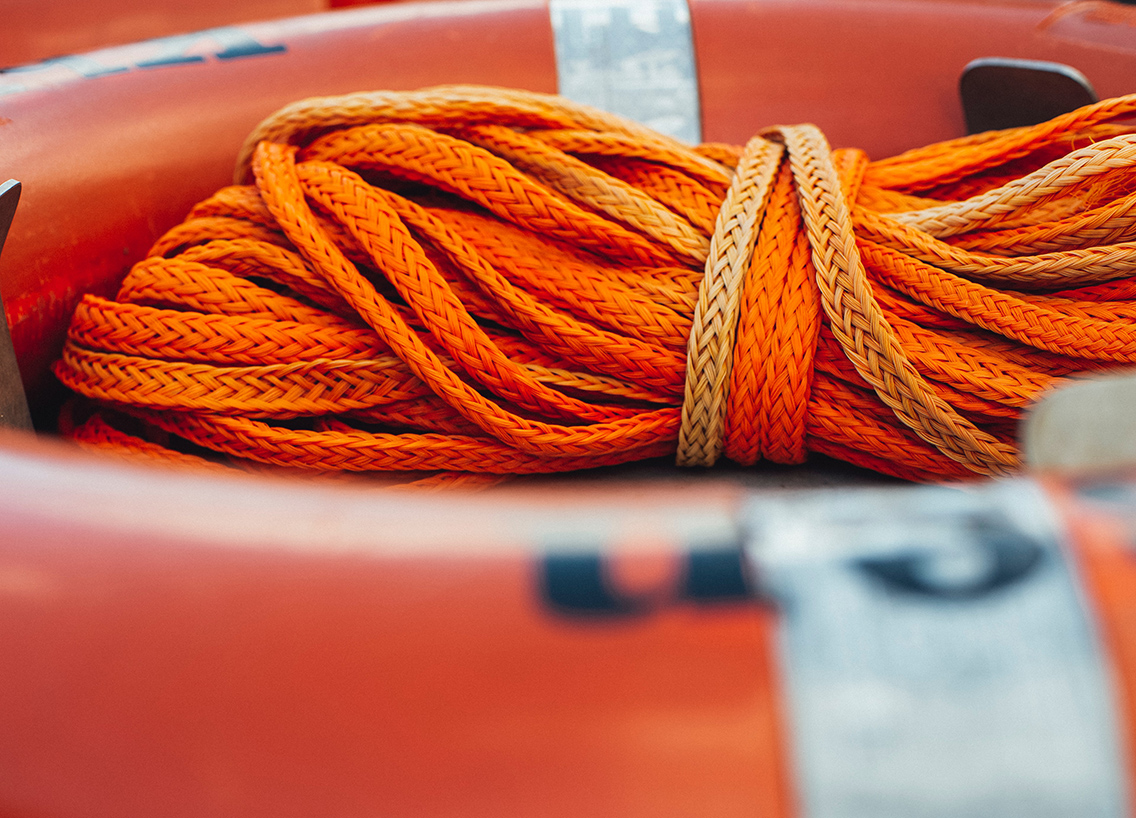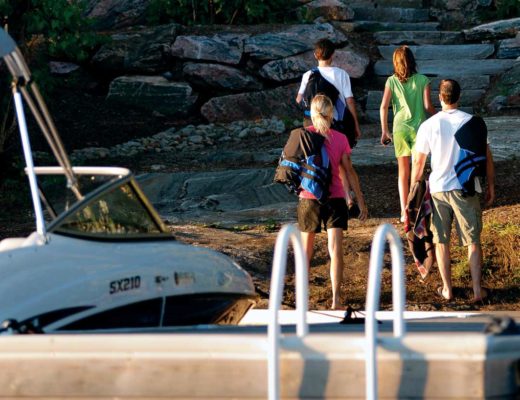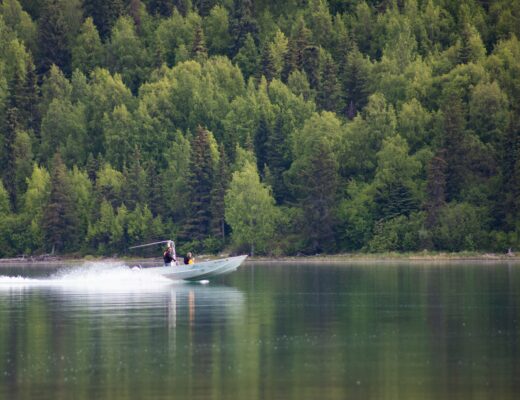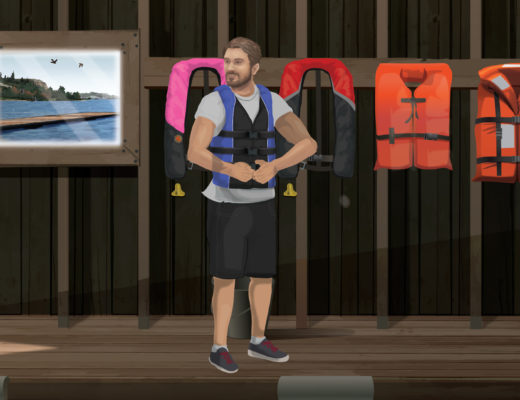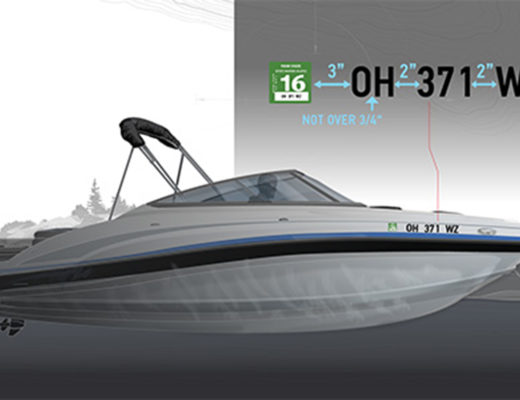Planning ahead and having the right boat safety equipment on board before going boating can make for a safer and more enjoyable boat trip. All boats are required by law to carry specific boat safety equipment at all times. The required boat safety equipment depends on the size and type of boat.
The BOATsmart!® Safe Boating Guide contains all the boat safety requirements specific to your size of boat.
There are four types of important safety equipment that all boaters should be familiar with and know how to use: Boat Safety Equipment, Personal Safety Equipment, Navigation Equipment and Distress Equipment.
Boat Safety Equipment Includes:
- Bailing Device: A bailing device is used to remove water from the inside of a boat. A bailing device could be a manual or electric bilge pump, a bucket, or a homemade scoop.
- Anchor: An anchor can be used to secure your boat in case of a breakdown or anchorage due to poor weather. Anchors are available in various types and styles; boaters should refer to their boat manufacture’s recommendations for style and weight.
- Manual Propelling Device: Manual propelling devices, such as oars or paddles can be used to maneuver your boat in case of an engine failure and boating breakdown.
- Axe: An axe can be used as an effective fire-fighting tool on large boats. An axe can be used to chop a wall that is concealing open flames, an axe can also be used to cut a tow line in case of an emergency.
- Life Ring: A life ring, also known as a lifebuoy, is a circular-shaped device that can be used to rescue a person who has fallen overboard. A life ring must be attached to a line of at least 15 meters in length.
- Fire Extinguisher: A fire extinguisher is a tool to control small fires in emergency situations.
- Re-boarding Device: A reboarding device, such as a ladder is designed to aid and assist a person back into the boat or back on board.
Personal Safe Boating Equipment Includes:
- Personal Floatation Devices (PFDs) & Lifejackets: PFDs and Lifejackets must be approved by Transport Canada.
- Buoyant Heaving Line: A buoyant Heaving Line is equipped with a buoy or float at one end. The buoyant heaving line is designed to throw to a person who has fallen overboard or is in the water and needs help.
- Emergency Kit: An emergency kit should be stored in a watertight container and in an easily accessible location. The emergency kit should include: emergency rations, drinking water, a first aid kit, waterproof matches, a waterproof flashlight, a knife, a whistle and dry clothing.
Boat Navigation Equipment Includes:
- Sound-Signaling Devices: Sound-signaling devices can be used in navigational situations to alert other boaters to your intentions or to signal your need for help. Types of Sound-Signaling Devices: Mechanical (floatless) whistle, Horn, Portable compressed-air horns and a Bell
- Navigation Lights: Navigation Lights enhance the visibility of your boat at night, or during periods of reduced visibility such as fog or rain. Navigation Lights make your boat visible from all angles. Navigation Lights must be displayed one hour prior to sunset and remain on until one hour after sunrise, and during periods of restricted or reduced visibility
- Passive Radar Reflector: A passive radar reflector is a metallic device that is used to identify the position of your boat to other vessels equipped with radar.
- Magnetic Compass: A compass is a navigation aid for the boat operator to indicate direction. The needle in a magnetic compass will point to the magnetic north.
Boating Distress Equipment
Flares:
- Flares are used to signal distress and need for help.
- Depending on the size of and type of boat and where you are boating you may be required to carry certain types of flares. For example, if you are boating in an ocean or on a body of water where you may be 1.5 km from shore you are required to carry flares. However, boaters operating on a river or lake, which at no time your boat can be more than 1 nautical mile from shore, are not required to carry flares.
- Flares should be stored in a watertight container and located in a cool, dry area, and easily accessible in case of emergency.
- Flares are valid for four years, make sure to check the manufacture’s date and read the manufacturer’s instructions before using a flare.
- Flares must be approved by Transport Canada.
- It is illegal to test or discharge a flare if it is not being used in an emergency situation.
- To dispose of outdated flares, you should contact your local law enforcement agency or fire department for proper disposal procedures.
- There are four types of approved flares in Canada.
Types of Approved Flares:
- Type A – Parachute flare: easily seen from water, land, and air. Must emit a red light.
- Type B – Multi-star flare: easily seen from water, land, and air. Must emit a red light.
- Type C – Hand-held flare: not as easily see from afar but effective for marking your position. Must emit a red light.
- Type D: Smoke flare: Highly visible during daylight hours. Must emit orange smoke.
Watertight flashlight:- Most vessels are required to carry at least one watertight flashlight on their boat at all times. In an emergency, a flashlight can be used as an illuminating device or to send a distress signal. Make sure your flashlight has working batteries.
- Using a flashlight you can signal your need for help by flashing SOS. SOS is signaled by three short flashes, then three long flashes, followed by three short flashes.
Refer to the Official BOATsmart!® Safe Boating Guide for specific requirements for your boat.
